History goes hi-tech
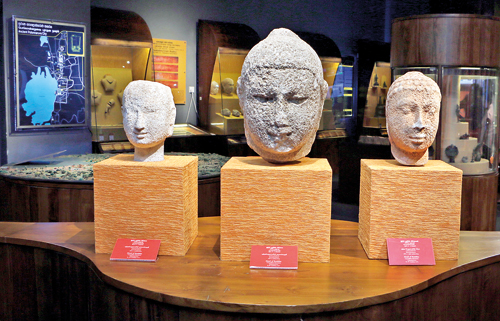
From Polonnaruwa: Classic Buddha statues influenced by Greek sculpture. Pix by Priyanka Samaraweera
Polonnaruwa’s skyline has a new Goliath. Once, the medieval capital which was a city since the Greek times was dominated by stupas, but today, a colossal geometric steel and glass cube building looms large.
The Ancient Technology Museum, opened barely six months ago, is a wonder to discover. Not only is it beautifully curated, but it also has a unique premise: to “showcase our ancient technology using cutting-edge modern technology”.
The hi-tech begins at the foyer itself- where interactive screens allow visitors to learn what awaits them within the seven galleries and beyond- whetting their appetite for the rich panorama on display- from the Paleolithic stone choppers to sophisticated palaces.
Each gallery comes with its own screens which offer a bounty of background details to the curious, fleshing out the worlds where these artefacts come from.

Up close and intricate: Visitors get to know an ancient reservoir
The first gallery is dedicated to the medieval wonder of Polonnaruwa- called an ‘Indian summer’ or an extraordinarily brilliant burst of creativity (given that all of it was put up in just 120 years). Dominating the gallery are Shiv Nataraj images and a panoply of Hindu figurines- for South India loomed like a possessive queen mother over the whole era.
The importance of the kingdom is vouched for by brilliant jewellery and coinage. Amidst replicas of the period’s stone statues you find a model of Polonnaruwa city with each site in miniature.
The second gallery, on prehistoric and proto-historic Iron Age technology, opens to a glade of pristine jungle with hunter gatherers while cavemen fashion tools out of quartz and kahanda metal- later also wood and bone- tools that would gain more geometric shape and handiness with time.
There are also the rites of burial of the prehistoric- the great urns or jars buried with human remains, the tombs made up of hefty slabs which stand close lest the dead spirits roam to haunt the living, and the clay ‘boats’.
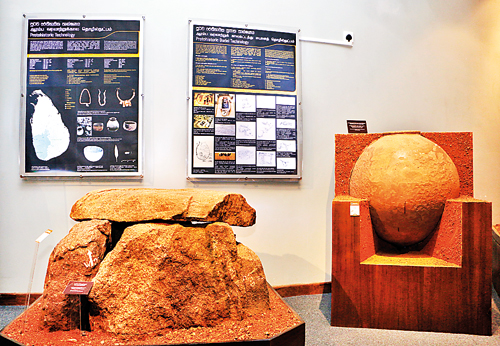
Examples of Megalithic burials: A tomb and an urn
The third gallery, on Pottery and Metallic Technology, lays bare the art of the potter’s wheel- with videos and 3D sensors- and has cross sections of the ovens used to fire pottery. The earliest of our pottery comes from before 5300 BC, from the Dorawakanda prehistoric cave in Kegalle.
Iron, however, was first used some 4,000 years later. Reconstructed with startling finesse are the two types of furnaces- the multi-gas pipeline technology and the use of bellows for artificially supplying the air to the furnace.
The technology the Sinhalese truly perfected was irrigation technology, and pride of place is given to the wewa and its technical features in Gallery Four. It also delves into our indigenous agriculture with its fascinating lore. There are the wee bissas and kurahan bissas- bins to store paddy and millet- the whole culture of chena cultivation in the dry zone, equipment used in paddy cultivation and of course the methods to keep away vermin.
The art of building- to which the fifth gallery, bristling with replicas, is dedicated- takes you from the kataram- the primitive ‘drip ledge’ which made any cave habitable- right down to such exquisite oeuvre as the Sigiriya fortress or the Thuparama image house- passing through the stupas- of which there were six types. The visitor can pick up a replica of each stupa and place it on an interactive screen which will tell him/her all about that particular stupa.
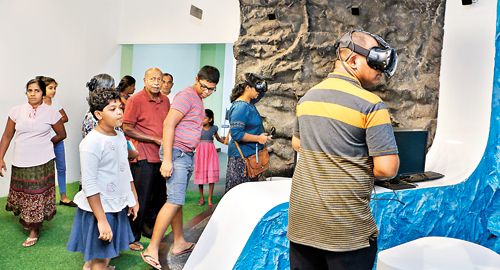
Reliving history through virtual reality
Moving on to the finer arts, Gallery Six is a behind-the-paint-and-chisel look at how our art, sculpture and wood carving evolved. There is a layer by layer reconstruction of how stylized flat Kandyan murals were painted on wattle and daub walls, and gives away some of the pivotal secrets of our sculpture- admired since antiquity. Preserved are ola leaf books on stone sculpture like Shariputhraya or Bimbamanaya, which reveal that symmetry was the key. The museum has a measuring scale point called lamba thatuwa.
Gallery Seven, though the final, orients itself towards the beginnings of Aryan Lanka. It gathers together the vessels on which settlers came- starting from the most primitive rafts to kattumaram and teppam still used in Mannar and Trincomalee- and also grander ships like the yatra- the last of which sank in 1930.
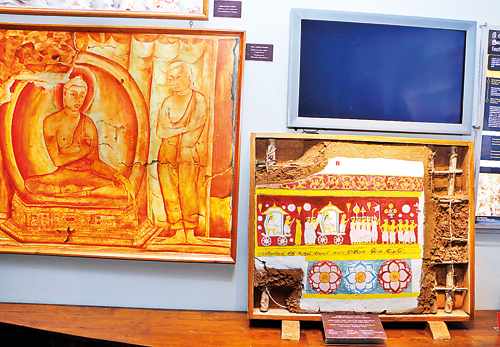
Off temple walls: Murals from Polonnaruwa and Kandy
It also harks back to textile technology which must be the first recorded technology in the island. There is a rare replica of a spinning machine- the one reproduced in Ananda Coomaraswamy’s ‘ Medieval Sinha-lese Art’ and others like the cotton seed removing machine, the carding bow, the carding brush and takli.
The activity gallery is where the visitor gets to participate in the world he was witnessing. There is quartz and kahanda for him to create tools, or he can spin cloth, draw, make pottery and try the koti pettiya- a device that makes a sound like a leopard sawing- to chase away elephants.
Virtual Reality technology allows visitors to experience Sigiriya- the exotic gardens and the palace as they were in King Kassapa’s time in 5th century AD- and also the irrigation technology of the Moragahakande project.
LIDAR technology allows visitors to create 3D printed models of Sigiriya, Jetawanaramaya and other ancient monuments. The museum also has a library, a souvenir shop and a wax museum that has statues of all of Sri Lanka’s prime ministers and presidents since Independence.
The Ancient Technology Museum, New Town, Polonnaruwa, is open daily from 9 a.m. to 5 p.m., closing only on poya days.
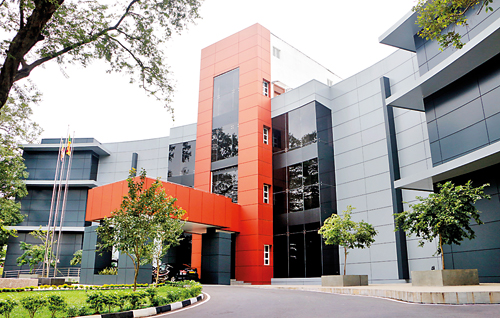
Latest addition to an ancient skyline: The museum
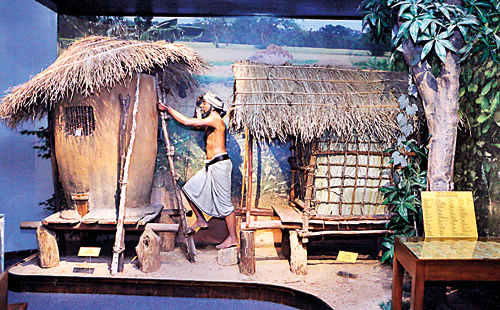
A tableau of traditional architecture: Paddy bins and heirloom rice


